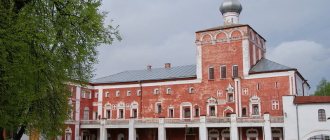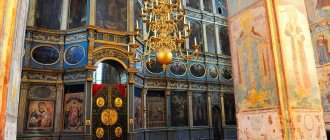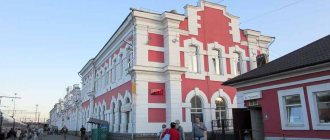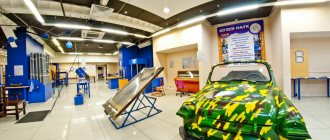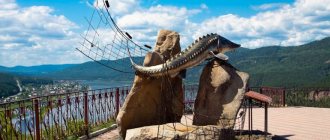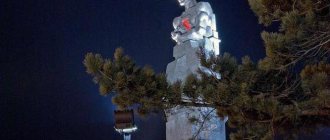Vologda is a beautiful and pleasant Russian city. Many come here on their own for a day and are convinced that it is not possible to see all the sights of Vologda in one day.
Vologda is an ancient city; it was first mentioned in chronicles in the same year as Moscow, i.e. in 1147. Ancient Vologda is a real tourist pearl, where a rich excursion program awaits you. There would be a desire! Magnificent wooden estates and old churches are scattered throughout the city. Also no less famous are Vologda lace, Vologda oil and carved palisades sung in a popular song. Churches in Vologda have been preserved in large numbers and represent different architectural styles - from Russian patterned to strict classicism. For lovers of historical buildings, the city center will be very interesting, where multi-colored domes, powerful walls and fancy architraves of picturesque wooden houses will appear before your eyes every now and then.
Kremlin Square and Vologda Kremlin
The Vologda Kremlin is the main attraction of Vologda, a historical and cultural center. It is located almost on the river bank. Kremlin Square is filled with some special energy. The ensemble surrounding the square includes three Orthodox churches, which are described below. Surprisingly, right up to 1947 this square was paved with wood, which in itself is extremely rare for the 20th century. But the first buildings here appeared under Ivan the Terrible. Thus, only for the 800th anniversary of the city, the area of the Vologda Kremlin was paved with stone.
The Vologda Kremlin arose during the reign of Ivan the Terrible; its history dates back to 1567. The Tsar of All Rus', fearing a revolt of the boyars in Moscow, was looking for a place for a reserve residence, and Vologda, in his opinion, was the best fit in this regard. In case of unrest, it is easy to get from Vologda to the North Dvina Sea Route and hide in Europe.
The Vologda Kremlin was built on a royal scale. Ivan the Terrible wanted it to even surpass the Moscow Kremlin. 20 defensive towers and massive walls surrounded by deep ditches with water rose above the city. However, in 1571, Ivan the Terrible left Vologda, and construction at that time was only half completed. As a result, the rest of the walls and towers were built, but from wood. The total length of the fortress walls exceeded 3 km.
The wooden part of the Kremlin suffered the most during raids and fires. In 1670, there was a strong spring flood that washed away part of the earthen ramparts. They did not restore the old walls and gradually their fortress began to be dismantled for building materials for houses and churches.
By 1820, most of the fortifications no longer existed and had lost their significance.
Today the Vologda Kremlin is called the complex of the Bishop's Court built in the mid-17th century, which includes the Simonovsky building, the Gavrilovsky building and the Iosifovsky building. They are the first residential stone buildings in Vologda.
The residence of the Vologda bishop was located here. The complex is built around the St. Sophia Cathedral. In 1671-1675, when the old Kremlin began to be dismantled into bricks, the Bishop's Court acquired its own towers and walls. Now the territory of the Bishop's Court is occupied by the Vologda Museum-Reserve.
St. Sophia Cathedral of Vologda
There are cathedrals with the name St. Sophia in different cities, including in Vologda. St. Sophia Cathedral with its bell tower is certainly the main attraction of the Vologda Kremlin (Bishops' Court).
Construction of the cathedral began in 1568, i.e. almost simultaneously with the construction of the Kremlin. The St. Sophia Cathedral was built in the likeness of the Moscow Assumption Cathedral, they even planned to name it the same. The main construction work was completed in 1570, however, Ivan the Terrible hesitated to consecrate the cathedral and let people into it. And a year later, plaster fell from the vault of the St. Sophia Cathedral directly onto the king’s head, which the autocrat immediately took as an assassination attempt. In the same year, Ivan the Terrible left Vologda, and St. Sophia Cathedral remained in an unfinished state for many years (until 1587).
Now St. Sophia Cathedral is the oldest stone building on the territory of Vologda. It is open to the public only in the summer and is also under the jurisdiction of the Vologda State Museum-Reserve.
The 78-meter bell tower of the Cathedral in pseudo-Gothic style is a real decoration of the entire ensemble of the Kremlin. The first three were made of wood, and the current one is already the fifth. The first stone bell tower was built in 1659. It is noteworthy that it was built from the very materials that were formed during the dismantling of the Kremlin walls. After 10 years, they decided to increase the height of the bell tower, for which the top of the bell tower was dismantled, and a new bell tower was built on the old foundation, which we now see in Vologda.
Access to the bell tower is open. The climb is quite difficult and long, which is compensated by wonderful views of the city from the observation deck.
Revolution square
The central square of Vologda is located within the historical district called Nizhny Posad. It arose in 1918 as a result of the unification of three squares - Sennaya, Spasskaya and Aleksandrovskaya.
Several churches were built here in the 17th century, but they were destroyed during the USSR. Today the square is decorated with monuments from the Soviet era: the Eternal Flame memorial and the stone monument to the Heroes of the Civil War, white and lonely, similar to a tooth, popularly called “The Tooth”.
Revolution Square is surrounded by very beautiful buildings.
Where to stay in Vologda
To see more ancient Vologda churches, unusual museums and visit the surrounding area, travelers plan to stay in Vologda. It offers hotels of any star rating, several hostels and guest houses, as well as a large selection of apartments from the hospitable residents of Vologda. It is most convenient to stay on the right bank of the river between Verkhny and Nizhny Posad, the historical districts of Vologda. All prices are affordable, slightly higher than the city average - only for a couple of available 4 and 5 star hotels.
- Vologda Hotels
- Hostels for Budget Travelers
- Flats and apartments
One way to save on travel is to book accommodation on Booking.com with cashback Cashback promotion on Tourist. RU
Photo: © Igor Butyrskii
Resurrection Cathedral
The temple of the 18th century was built under Archbishop Joseph II the Golden. The building is in the Baroque style. The original painting has not been preserved, as the interior was renovated in the first half of the 19th century. Inactive between 1938 and 2016. Now it is again under the jurisdiction of the Russian Orthodox Church and regular services have been resumed there. The building is a valuable architectural monument and an object of cultural significance.
Alexander Nevsky Church
The Church of Alexander Nevsky is located next to the St. Sophia Cathedral on the Cathedral Square. Initially, the church was built in a different place; it was located opposite the Elias Monastery. In connection with the construction of the Vologda Kremlin, approximately in 1612, the church was moved to its current location.
The place where the Alexander Nevsky Church was moved was then called the Famous Mountain. Probably, reserves of lime were stored here, which was used in the construction of the walls of the Vologda Kremlin.
Until approximately 1782, the church remained wooden and suffered from fires more than once. When rebuilt in stone, the church almost completely retained its appearance, with the exception of the bell tower, which was originally a hipped roof. In the 1860s, the bell tower was replaced with a spire.
Church of the Intercession of the Virgin Mary at Torg
The Church of the Intercession on Torg was built in 1778 - 1780. on the site of another, more ancient wooden church of Joachim and Anna, which was the home church of Tsar Ivan the Terrible and was located inside the Kremlin. The use of the toponym “at Torgu” is apparently due to the fact that there was a large trading area nearby, which was the center of trade in the city.
The Church of the Intercession on Torg is made in the traditions of ancient Russian architecture: a simple, cubic shape with one dome, a low refectory with two domes and a low hipped bell tower. In the second half of the 19th century, a massive porch in pseudo-Russian style was added to the church. During Soviet times, the church was closed, but it has survived to this day without any significant reconstruction or damage.
Church of St. Nicholas the Wonderworker in Vladychnaya Sloboda
This temple, along with the St. Sophia Cathedral and the Church of Dmitry Prilutsky on Navolok, is considered one of the first stone buildings in Vologda. From an architectural point of view, it is not something outstanding; rather, it is a typical townsman temple, which was built everywhere in the 17th century. The interior space is decorated in the Baroque style with characteristic ornamental moldings, arches and vaults usually associated with this style.
Second day
The second day in Vologda is worth devoting to a visit to the Spaso-Prilutsky Dimitriev Monastery and walks on the left bank of the Vologda River.
Spaso-Prilutsky Dimitriev Monastery
The holy monastery, located on the outskirts of Vologda, in the Priluki microdistrict, was founded in 1371 by a disciple of Sergius of Radonezh - Dimitri Prilutsky. It is from this monastery that one of the masterpieces of Russian icon painting by the Moscow master Dionysius comes - “Reverend Demetrius of Prilutsky, with Life” (late 15th - early 16th centuries). Now the icon is kept in the Vologda Museum-Reserve. The miraculous relics of St. Demetrius of Prilutsky are kept in the monastery itself.
One of the largest and oldest monasteries in the Russian North reached its peak in the 18th century. At that time he was the richest in the region. During the Patriotic War of 1812, church valuables from the holy monasteries of Moscow and the Moscow region were kept in the monastery. During the Soviet period, a transit prison was established on the territory of the Spaso-Prilutsky Dimitriev Monastery - dispossessed people were temporarily kept here before being sent to the northern camps. In the middle of the 20th century, military warehouses, a cinema, and a house for the disabled were located on the monastery square. But already under Soviet rule, a decision was made to restore the buildings and turn the monastery into a museum-reserve. Now the monastery is operational, tourists are allowed into the territory during services and church holidays, as well as as part of an excursion group at other times.
The monastery ensemble is an architectural monument of the 16th–18th centuries. The oldest buildings of the monastery include: the Spassky Cathedral (built 1537–1540), the wooden Assumption Church (the first half of the 16th century, the oldest wooden tent church in Russia), stone monastery cells (early 17th century). Also impressive are the monastery walls with a total length of 950 meters with impressive towers.
Details: Spaso-Prilutsky Dimitriev Monastery
Spaso-Prilutsky Dimitriev Monastery Photo: © dualia1
The second half of the day can be devoted to the sights of the Vologda district of Zarechye, located on the left bank of the river. The district was settled later than the right bank of Vologda. From historical documents it is known that the first wooden houses in the area appeared in the 17th century. But the area began to be actively populated only in the following centuries. A fire in 1920 destroyed most of the ancient wooden buildings of Zarechye - more than 300 houses. In Soviet times, large enterprises appeared here, including the Shipyard. Now the main attractions of the area are the ancient churches located along the 6th Army embankment.
Church of the Presentation of the Lord
The church in the late Baroque style with a bell tower in a pseudo-Gothic style was erected in the 30s of the 18th century. The first church on this site, a wooden one, was located in the middle of the 17th century. In 1735, a warm church was built, 100 years later the ensemble was supplemented with a cold church. The appearance of the church combines the traditions of Baroque, which came late to the Vologda region, and Russian pattern design of the 17th century. Unique architectural details in the external decor of the church are the inserts of glazed figured tiles on the architraves, pediments and pilasters. Previously, the church housed several valuable icons, but now they are exhibited in major Russian museums. The most valuable icon is the “Descent from the Cross” (16th century) - it is kept in the Tretyakov Gallery.
More details: Church of the Presentation of the Lord
Church of the Presentation Photo: © Igor Butyrskii
Church of John Chrysostom
The stone Church of St. John Chrysostom was erected in 1664, but, as is the case with many other churches, a wooden church previously stood on this site. Two churches were combined in one building: cold and warm. In the 17th century, the temple was considered one of the most beautiful in Vologda - many guests of the city described it. But by the 20th century the parish became the smallest, which led to the decision to close it. In the 30s of the 20th century, a military warehouse was located in the temple, but in the 60s the church was recognized as a cultural monument. Now the temple has been returned to the Orthodox community, but is in need of restoration work.
Church of St. John Chrysostom Photo: © Ena
Church of Demetrius of Prilutsky
One of the first stone churches in Vologda was erected in 1651. The complex consists of two churches - the cold five-domed Church of Demetrius of Prilutsky and the warm single-domed Assumption Church with a bell tower. The name of the church often uses the epithet “on the curtain”. This word was used to describe the low bank of the river—the church was located in an area that was flooded by spring floods. The architecture of the Church of Demetrius of Prilutsky is close to the traditions of Yaroslavl architecture of the mid-17th century, while the Assumption Church is reminiscent of ancient Russian churches. It is worth going inside the Church of Demetrius of Prilutsky - 18th-century paintings have been preserved on the walls, and the iconostasis is an example of the Baroque style with elegant and rich carvings.
Details: Church of Demetrius of Prilutsky
Church of Demetrius of Prilutsky Photo: © Ena
Church of St. Nicholas the Wonderworker
The Church of St. Nicholas the Wonderworker was built in 1669 in the Vladychnaya Sloboda area - that was the name of the area belonging to the Bishop's court (that is, the lord). The temple is considered the third oldest - only St. Sophia Cathedral and the Church of Demetrius of Prilutsky are older than it. At the end of the 19th century, St. Nicholas parish was the second largest in the city. The temple was closed only in 1930. Initially, dispossessed residents from the middle and southern regions of the USSR were kept here. Later, a toy factory and a felted goods factory were opened in the church building. Now the temple is operational.
The Church of St. Nicholas the Wonderworker stands out with its large black domes - this is a new building; the previous domes were removed during the Soviet period. The architectural style of the temple is Russian patterned. The interiors were made in the Baroque style: instead of painting, the walls were decorated with rich ornamental molding.
Details: Church of St. Nicholas the Wonderworker
Church of St. Nicholas the Wonderworker Photo: © Ena
Church of St. Andrew the First-Called
The last one on the route is the Church of St. Andrew the First-Called , also located on the embankment, behind the bridge of the 800th anniversary of Vologda. The temple was built in 1670 on the site of a wooden church from the early 17th century. Like some other Vologda churches, in Soviet times, transit “kulaks” were kept here, and then state warehouses. Now the temple has been restored and is operational.
The most striking detail of the Church of St. Andrew the First-Called is one onion dome. According to historical evidence, the temple originally had 5 domes. The temple looks strict and laconic; its ensemble is complemented by a more openwork bell tower.
Panoramic view of the Church of St. Andrew the First-Called
Detailed material: Temples of Vologda
What to see in Vologda in 2 days in summer? In the warmer months, it's worth going on a river cruise. You will again see the sights of Vologda that you saw in 2 days, but from a different angle. In addition, a river walk is a way to relax and enjoy the views of the city and take a break from a busy walk. The most popular route is a 1.5-hour walk from Kremlin Square to the Spaso-Prilutsky Monastery with a guided tour. An alternative option is from the monument to the 800th anniversary of Vologda to - museum of Peter I. During the navigation period, river walks are organized daily, every 1.5–2 hours.
Photo: © dualia1
Church of the Intercession on Kozlen
The church building is made in the Moscow Baroque style and was built in 1710. Unique frescoes created by masters of the Yaroslavl school have been preserved here. Later paintings date back to the 19th – early 20th centuries. The first mention of this church dates back to 1612. According to the surviving data, there was previously another temple on this site, but it was burned by Lithuanian invaders during the Time of Troubles.
Temple of Constantine and Helena
A picturesque church of the late 17th century, built in the style of Russian patterning, characteristic of Moscow. This style was distinguished by the presence of five domes crowning a quadrangle on an extensive basement, and a tent-shaped bell tower of several tiers. Icons from the 15th to 18th centuries have been preserved in the temple. It is believed that it was also built on the site of an earlier structure - a wooden church erected during.
Spaso-Prilutsky Monastery
A monastery dating back to the 14th century. Founded by the student and associate of Sergius of Radonezh, St. Dmitry Prilutsky. The monastery is one of the most revered and ancient in the Russian North. Its complex includes architectural monuments of the 16th-18th centuries. 1926 was a turning point for the monastery - it was closed, and in the 1930s it was even used as a prison. In 1992, the monastery was returned to believers.
Gorne-Uspensky Monastery
Convent for women from 1590 to 1924. It was founded by Domnicia, a nun and old woman.
Initially, all the buildings were wooden; the first stone structure was erected in the second half of the 17th century. In the 19th century, a school and shelter were opened at the monastery. This monastery is currently under restoration, some parts of it have been completely restored, while others have been lost forever.
Excursions from Vologda for 2 days
There are quite a lot of options for where to go from Vologda for 2 days. The Vologda region is an incredibly interesting region for tourists with historical sights, centuries-old holy monasteries and the amazing nature of the Russian North. Depending on your interests, you can create a thematic weekend route around the Vologda region.
- Pilgrimage tour . Once upon a time, there were more than 100 holy monasteries in the Vologda region. Now more than a dozen monasteries are of tourist interest. When traveling around the Vologda region, it is worth visiting: St. Michael the Archangel Monastery in Veliky Ustyug (founded in 1212), Spaso-Kamenny Monastery on the island of Kubenskoye Lake (founded in 1260), Ferapontov Mother of God-Nativity Monastery (founded in 1397), Kirillo-Belozersky Monastery (founded in 1397).
- Ancient cities of the Vologda region . There are more than 10 interesting cities with ancient history in the region. You won’t be able to visit all the cities in 2 days; it’s worth including 3-4 cities in your itinerary. This could be Veliky Ustyug with the estate of Father Frost and ancient temples, or the city of Totma, famous for its own architectural style - “Totem Baroque”. In Belozersk you can see one of the largest Kremlin ramparts in Russia (1487), in Ustyuzhna you can see stone churches and a unique collection of ancient Russian icons in the local history museum.
- Natural attractions . The main natural attraction is the Russian North National Park . In the park you can climb Mount Maura , walk along an eco-trail, or relax with a tent on the lake. In the valley of the Tagazhma River you can see the rapids flow of water through the canyon - with small waterfalls and picturesque banks. There are graylings in the river. In the Vytegorsk region you can visit the shores of Lake Onega and visit the Andomskaya Gora .
For 2 days you can leave Vologda to neighboring regions: Kostroma, Yaroslavl, Tver and Novgorod regions. The most popular routes are: Yaroslavl - Rostov - Uglich, Kostroma - Ples - Kineshma, Veliky Novgorod - Staraya Russa.
Ferapontov Monastery Photo: © Vladimir Shalaev
Museum "World of Forgotten Things"
In this museum you will find an exhibition dedicated to pre-revolutionary Vologda, the culture and life of various segments of the urban population of that time. The halls display 19th-century interiors and various items common in pre-revolutionary houses. The extensive collection is located on three floors, it consists of old photographs, family heirlooms, furniture, and interior items.
Theaters
Drama Theater
The oldest regional theater in Vologda has existed since 1849. During this time, he changed several wooden buildings and addresses, while remaining at the epicenter of the city's cultural life. In the year of its 125th anniversary, the theater finally acquired its own home - a minimalist building made of glass and concrete.
The playbill presents plays by classics and modern authors: Gogol, Ostrovsky, Griboedov, Shakespeare, Alexievich, Heifetz and others.
Chamber Drama Theater
st.
Mira, 18 The non-state theater appeared in Vologda only 20 years ago, when the ambitious troupe of the Youth Theater decided to create a new creative association. For a long time, the actors played entertainment in rented venues until they were given their own building.
The chamber theater settled in an old two-story mansion. The poster includes works by domestic and foreign authors in original interpretations. Dramas, comedies and musicals regularly attract full houses.
Puppet theater "Teremok"
st. Lenina, 21
The children's puppet theater was founded in 1937. Recently it has occupied the building of the former church of Zosima and Savvaty Solovetsky. The architectural features of the building with a turret and kokoshniks on the windows are really associated with a fairytale tower - hence the name of the theater.
Performances are designed for audiences from 0 to 16 and older. For the little ones we offer timeless classics: “Thumbelina”, “The Frog Princess”, “Kolobok”. For older viewers and their parents, more serious productions: “Khanuma” by Tsagareli and “As You Like It” by Shakespeare.
Theater for Young Spectators
The Vologda Youth Theater was founded by theatrical standards recently - in 1976. For the first 4 years, the creative team wandered around cultural centers until they got their own premises. The actors were given the building of the Pushkin People's House, which previously housed the drama theater.
The Youth Theater has two halls at its disposal:
- The large one seats 425 spectators. It is equipped with a round rotating platform, a hold and hatches. In addition, there is a huge screen for projecting images.
- The small hall is designed for 88 people. It is used for original productions and chamber performances.
Museum "Vologda Link"
In Tsarist Russia, one of the places where prisoners were exiled was Vologda. In modern times, or rather in 2007, in a wooden house on the street. Maria Ulyanova opened a museum dedicated to this phenomenon. In the building where the museum is opened, in 1911-12, the future leader of the Soviet people, known to us as I.V. Stalin, lived for several months in 1911-12. He was also in exile in Vologda. The exhibition tells about famous political prisoners and their activities.
Stories, routes and tips from tourists with photos
Tourists will tell you in their reviews how to get to know Vologda better in 2 days. In their reports, tourists describe their routes around the city and share unusual places. In the reviews you can find tips on organizing leisure time in Vologda, recommendations for cafes and restaurants. You will see photographs of Vologda in winter and summer, and find out what time is best to plan your trip.
- “Vologda in winter 2016” - a story from Yulena Bessonova.
- A series of reports from Irina: “Weekend in Vologda (part one)” and “Weekend in Vologda (part two).”
All tourist reviews about trips to Vologda
See also advice: What to bring from Vologda
Church of Alexander Nevsky Photo: © dualia1
Museum "Literature. Art. Century XX"
The museum is located on the territory of the former mansion of the merchant Sitnikov, which belongs to the monuments of Vologda wooden architecture of the 19th century. The collection is entirely dedicated to the life and work of two artists: composer V. A. Gavrilin and poet N. M. Rubtsov, who dedicated many of their works to the Russian North. The collection is a branch of the Vologda Museum-Reserve.
House with lilies
The mansion of merchant Chernoglazov is an example of new life for a dilapidated building. This architectural monument of the 19th century, which is in disrepair, was bought by a family of local entrepreneurs. After the restoration, a flower shop opened here.
Another architectural monument - the mansion of the merchant Izvozchikov is located 600 meters from the House with Lilies. The flower shop of the same entrepreneurs also operates here. The trading floors in the buildings resemble noble mansions with antique furniture, antique furnishings and elegant dishes.
The premises have been restored:
- carved doors;
- window frames with original glazing;
- ceiling vaults and ceiling beams.
Entrance to the buildings is free, you can explore the interior on your own, but access to the House of Lilies museum is only possible with a guided tour or by appointment.
The exhibition presents:
- furnishings;
- historical documentation;
- valuables found during restoration.
Excursions from Vologda are conducted on weekends. A special photo zone has been created on the glassed-in veranda of the House with Lilies, where photo sessions are held. Located on the street. Chernyshevsky, 17.
Vologda wooden architecture
In Vologda, not only the city's wooden buildings have been preserved; there are many unique houses and their condition is often quite decent. These houses are included in the list of attractions of Vologda and are a must see!
By the beginning of the 21st century, there were from 105 to 170 wooden architectural monuments in Vologda, dating from the 18th – 20th centuries. These are noble, merchant, and bourgeois houses, made in such architectural styles as classicism, empire and modern.
Many examples of Vologda wooden architecture can be found near the Kremlin. There are many such houses on Leningradskaya Street .
Also take a look at Blagoveshchenskaya Street (previously called Klara Zetkin). this is a real treasure trove of wooden houses in Vologda. On this street there are several outstanding monuments of wooden architecture and a monument to a carved palisade.
Cultural attractions and museums
House-Museum of Peter I
Sovetsky Prospekt, 47
The squat house of Peter I is an architectural monument of the 17th century, surrounded by a shady park. During his visits to Vologda, the Tsar stayed in this house 5 times.
In 1872, a museum dedicated to the emperor was opened here. The most valuable exhibits: the clothes of Peter I, his death mask, two Dutch chairs and a mirror - an attribute of royal power.
Vologda Museum-Reserve
In addition to the Vologda Kremlin and the Bishop's Compound, where the main historical values are located, the main museum complex of the region includes 9 more branches.
The funds number over 1 million units. These are handicrafts, icons and church utensils from lost churches, paintings, sculpture, mineral collections, numismatics, furniture and household items from noble estates.
The main exhibitions of the Vologda Museum-Reserve are:
- icons created by Vologda masters during the period of the 16th-19th centuries;
- wooden sculptures and carvings: bas-reliefs, iconostases, etc.;
- fine art of the 17th-20th centuries (graphics, portraits, paintings);
- household, lace and religious fabrics.
Exhibition complex “Vologda at the turn of the 19th-20th centuries”
The branch of the Vologda Museum-Reserve occupies 3 wooden houses: a merchant estate, an apartment building and a shop. Once upon a time this entire complex of buildings belonged to the merchant Samarin.
In 1913-1914, Lenin’s younger sister Maria rented an apartment in an apartment building. A memorial museum dedicated to the revolutionary was opened in 1968, but it existed only until Perestroika.
In the 2000s, new exhibitions gradually began to appear. The following exhibitions are currently available:
- “Photo for memory” - rare photographs of Vologda 200 years ago.
- “Old School” - the history of education, the structure of primary schools and secondary educational institutions in the Vologda region.
- “Traditions of the Russian feast” - the culture of hospitality, examples of everyday and festive table settings.
- “Relics of the Samarin House” - photographs from the family archive, personal belongings and household items of the merchant family.
The museum has a showroom, a souvenir shop with handicrafts, and a photo studio where you can take photographs in ancient costumes.
Art Gallery
The Vologda Gallery, founded in 1952, contains over 30,000 exhibits. The extensive collection is divided between 4 branches.
- The largest part of the collection, represented by contemporary Russian art, is exhibited in the Resurrection Cathedral.
- The Shalamovsky House, a two-story mansion from the 18th century, displays a collection of Western European and Russian paintings.
Another 2 exhibitions are dedicated to specific persons: one is based in the Korbakov House, the other in the workshop of A. Panteleev.
Museum "World of Forgotten Things"
st.
Leningradskaya, 6 The buildings that occupy the museums of Vologda are attractions in themselves. One of these buildings is a wooden mansion built by the merchant Panteleev in the mid-19th century in the spirit of late classicism.
Inside there is a museum “The World of Forgotten Things”, which has 2 permanent exhibitions:
- On the ground floor, the interiors of the Vologda nobles of the 19th - early 20th centuries were recreated (living room, study and dining room).
- The second exhibits portraits of local nobility of the 18th-19th centuries.
The mezzanine is reserved for temporary thematic exhibitions, which present rarities from private family collections.
Architectural and Ethnographic Museum "Semenkovo"
village Semenkovo
If you are looking for something to see in the vicinity of Vologda, be sure to include the Semyonkovo Museum in your route. This is an open-air ethnographic complex located just 14 km from the regional center.
Monuments of wooden architecture from the mid-19th – early 20th centuries are collected on an area of about 13 hectares. These are peasant houses, baths, forges, barns and other buildings. The pearls of the reserve are the windmill and the chapel of Elijah the Prophet.
A simple rural life has been recreated inside some buildings. Celebrations and thematic performances are often held on the territory of the reserve.
Museum "Vologda Link"
st. Maria Ulyanova, 33
In the pre-revolutionary era, Vologda was a place of exile for unreliable freethinkers. Historians believe that over 10,000 people visited here - mostly representatives of the creative intelligentsia. The thematic museum “Vologda Link” is dedicated to the events of those years.
The permanent exhibition in a two-story wooden house opened in 1937. Initially, it was entirely dedicated to Stalin, who was also serving exile in Vologda. Later, the exhibition was transformed into the “House-Museum of the Revolutionary Activities of the Bolsheviks in Vologda Exile,” and then was completely closed.
The rebirth of the museum took place in 2007. Now here you can learn about the life of exiles. In small rooms, the furnishings of the 19th and early 20th centuries are recreated, photographs, important documents, as well as personal belongings of oppositionists and gendarmes are exhibited.
Entertaining Einstein Science Museum
st. Leningradskaya, 79
Among the attractions of Vologda there are some very unusual ones - for example, the Einstein Museum, created mainly for children. Although it will be interesting for adults too. Visitors are invited to become full participants in scientific shows and experiments. All exhibits can be touched, launched and turned on.
Literally creating a storm in a glass, learning to control lightning, finding yourself inside a soap bubble, making a battery out of an apple - this is not a complete list of available scientific activities. They also conduct quests and master classes based on popular children's films and books.
Verkhny Posad
Verkhny Posad is the oldest part of Vologda, on the territory of which there are a considerable number of interesting and significant historical attractions. It was from Verkhniy Posad that the history of Vologda began.
It is believed that already in 1147 the Kyiv monk Gerasim founded a monastery here, which gave rise to the city. The current Kremlin is not the first, by the way. In 1461, the city became the capital of an appanage principality, and it was then that the Vologda Kremlin-fortress was erected, which existed until Ivan the Terrible. In 1567, by order of Ivan the Terrible, construction of a new fortress began. And the old Vologda Kremlin gradually became unnecessary and was dismantled.
Wooden houses in Verkhny Posad
Wooden houses are perhaps the main attraction of Vologda. In Verkhny Posad, as well as near the Kremlin, you can find many of these beautiful carved wooden houses.
Take a look at the Carved Palisade Center for Folk Arts and Crafts. The center hosts creative meetings with masters; lectures on topics related to the folk culture of the Vologda region, historical and archaeological discoveries, etc.
Many beautiful houses are ordinary residential buildings. It’s nice that residents maintain the historical heritage of their city in decent condition.
Monuments of Vologda
In the area of the Vologda Kremlin you can find almost all the most interesting monuments in Vologda.
“Door to Vologda” in 2014 became a gift to the city from participants in the “City of Crafts” festival.
Bench “Let’s sit and eat”
Dedicated to the famous Vologda dialect. Since 2015, this bench has become almost the calling card of the whole of Vologda. All visitors love to take pictures here, because the view from the observation deck is simply excellent.
The monument to the letter “O” , erected in 2012, just like the bench, is intended to perpetuate the Vologda Okanye.
Forged Rook
In the Kremlin Park you can find more than one art object, including the Forged Rook. A beautiful monument worth taking a photo with.
Monument to the Russian poet K. N. Batyushkov. It was installed on Kremlin Square in 1987. It is noteworthy that next to the figure of Konstantin Nikolaevich the sculptor installed a large horse. The composition also included Pallas Athena and Muse in the image of a Vologda peasant girl with a pipe (they can be found nearby).
"Bench of Reconciliation"
The bench is made for people in a quarrel; sitting on opposite sides, it will definitely bring you together. On the top of the bench - the shape of palms, if you have made peace - secure it and attach your palm to the bench. Address: Blagoveshchenskaya street, 24.
The monument to the Govorun bird is located on the territory of the historical Trade Square, and, at the same time, opposite the building of the Pedagogical University, since “The Govorun bird is distinguished by its intelligence and intelligence.”
A few facts about Vologda
- The city of Vologda was first mentioned in 1147 , which is considered the official year of its foundation.
- The name of the city translates as “clean water”.
- 224 historical, architectural, and cultural monuments are registered here, 128 of which are protected by the state.
- On an area of 116 sq. km. Home to about 313 thousand people.
- The distance to Moscow is 450 km, to Cherepovets - 145 km, to the homeland of Father Frost Veliky Ustyug - 450 km.
- Vologda is famous for its original dialect.
- The city became famous for the famous Vologda lace and is considered the lace capital of Russia.
- Vologda is famous for Vologda butter, which has a special taste and aroma.
- Vologda is included in the Silver Necklace of Russia and is a popular tourist city.
